
punch
competition Power amplifier
Operation & Installation
500.2
® ®
car audio
fanatics
for
®
power
new
chrome
heatsink

Dear Customer,
Congratulations on your purchase of the world's finest brand of car audio amplifiers. At Rockford Fosgate we
are fanatics about musical reproduction at its best, and we are pleased you chose our product. Through years
of engineering expertise, hand craftsmanship and critical testing procedures, we have created a wide range of
products that reproduce music with all the clarity and richness you deserve.
For maximum performance we recommend you have your new Rockford Fosgate product installed by an
Authorized Rockford Fosgate Dealer, as we provide specialized training through Rockford Technical Training
Institute (RTTI). Please read your warranty and retain your receipt and original carton for possible future use.
Great product and competent installations are only a piece of the puzzle when it comes to your system. Make
sure that your installer is using 100% authentic installation accessories from Connecting Punch in your
installation. Connecting Punch has everything from RCA cables and speaker wire to Power line and battery
connectors. Insist on it! After all, your new system deserves nothing but the best.
To add the finishing touch to your new fanatic image order your Rockford Fosgate wearables, which include
everything from T-shirts and jackets to hats and sunglasses.
To get a free brochure on Rockford Fosgate products and Rockford wearables, please call 602-967-3565 or FAX
602-967-8132. For International orders, FAX +001-1-602-967-8132 or call +001-1-602-967-3565.
The serial number can be found on the outside of the box. Please record it in the space provided below as your permanent record.
This will serve as verification of your factory warranty and may become useful in recovering your amplifier if it is ever stolen.
Serial Number:_____________________________________________
Model Number: ____________________________________________
If, after reading your manual, you still have questions regarding this product, we recommend that you see your Rockford Fosgate
dealer. If you need further assistance, you can call us direct at 1-800-669-9899. Be sure to have your serial number, model number
and date of purchase available when you call.
PRACTICE SAFE SOUND™
CONTINUOUS EXPOSURE TO SOUND PRESSURE LEVELS OVER 100dB MAY CAUSE PERMANENT
HEARING
LOSS. HIGH POWERED AUTOSOUND SYSTEMS MAY PRODUCE SOUND PRESSURE LEVELS
WELL
OVER 130dB. USE COMMON SENSE AND PRACTICE SAFE SOUND.

T
ABLE
OF
C
ONTENTS
Introduction.................................................................................................................................................................1
Accessory Pack ...........................................................................................................................................................1
Technical Design Features.............................................................................................................................................2
Design Features ...........................................................................................................................................................5
Installation Considerations ............................................................................................................................................7
Mounting Locations......................................................................................................................................................8
Battery and Charging ...................................................................................................................................................8
Wiring the System........................................................................................................................................................9
Using Passive Crossovers............................................................................................................................................10
Table of Crossover Components...................................................................................................................................11
Using the XCard.........................................................................................................................................................12
Customizing the XCard ...............................................................................................................................................12
XCard Resistor Chart...................................................................................................................................................13
XCard Configurations..................................................................................................................................................14
Installation ................................................................................................................................................................16
Using the Balanced Line Inputs....................................................................................................................................19
Rockford Fosgate Accessories ......................................................................................................................................21
Troubleshooting.........................................................................................................................................................23
Autosound 2000’s Quick Check for Troubleshooting.......................................................................................................25
Dynamic Power Measurements....................................................................................................................................27
500.2
Specifications ..................................................................................................................................................28
Warranty Information .................................................................................................................................................29
International Information.............................................................................................................................................30
G
ETTING
S
TARTED
Welcome to Rockford Fosgate! This manual is designed to provide information for the owner, salesperson and installer. For
those of you who want quick information on how to install this product please turn to the
Installation
section of this manual
or refer to the icons listed below. Other information can be located by using the Table of Contents. We, at Rockford Fosgate,
have worked very hard to make sure all the information in this manual is current. But, as we are constantly finding new ways
to improve our product, this information is subject to change without notice.
I
N
S
T
A
L
L
A
T
I
O
N
® ®
Sections marked
ADVANCED
OPERATION
include in-depth
technical information
Sections marked
INSTALLATION
include “slam dunk”
wiring connections
Sections marked
TROUBLESHOOTING
include recommendations
for curing installation
problems
TROUBLE-
S
H
O
O
T
I
N
G
a
d
v
a
n
c
e
d
O
p
e
r
a
t
i
o
n

– 1 –
ACCESSORY PACK
The accessory pack includes the mounting hardware necessary to secure the amplifier to the vehicle and to attach the end
caps to the amplifier.
Punch Power 500.2
Installation & Operation Manual
Punch Verification Certificate
(4) Amplifier mounting screws (#8 x
3
⁄4" phillips)
(4) Speaker connector screws (3/32" allen)
(2) Power connector screws (1/8" allen)
(4) End cap mounting screws (9/64" allen)
(1) Allen wrench 3/32" (speaker)
(1) Allen wrench 9/64" (end cap)
(1) Allen wrench 1/8" (power)
The Punch Power series of amplifiers represent the best Rockford Fosgate has to offer! Our engineers devised technical
features which would be considered overkill by other audio manufacturers, but not at Rockford Fosgate! Trans•nova,
DIAMOND, and TOPAZ, exclusively designed by Rockford, are just a few of these features which are described in the Technical
Design Features section of this manual.
INTRODUCTION

– 2 –
T
ECHNICAL
D
ESIGN
F
EATURES
◆ trans•nova (TRANSconductance NOdal Voltage Amplifier)
The trans•
nova
(TRANS conductance NOdal Voltage Amplifier) is a patented circuit (U.S. Patent 4,467,288) that allows
the audio signal to pass through the amplifier at
low voltage
. Each amplifier channel utilizes its own “fully floating” power
supply and is configured to increase power gain. The increase in power gain allows the drive stage to operate at a lower
voltage. A low voltage drive stage is the same principle used in high quality preamplifiers to produce high linearity and wide
bandwidth.
E-I I-E
trans•nova circuitry
◆ DIAMOND (Dynamically Invariant AMplification Optimized Nodal Drive)
DIAMOND
(Dynamically Invariant AMplificiation Optimized Nodal Drive - patent pending) is an important advance in circuit
design which reduces high frequency distortion. Amplifiers which utilize a large array of output MOSFETs cause a high
capacitive load on the driver stage. This load can make the high frequencies sound harsh. The DIAMOND circuit eliminates
high frequency distortion by allowing the driver to operate with 20dB or more of current headroom, whereas traditional drivers
have only 6dB of current headroom.
THE RESULT: Lower distortion and greater inherent stability.
◆ MEHSA (Maximum Efficiency Heat Sink Application)
The
MEHSA
(Maximum Efficiency Heat-Sink Application) is a proprietary process that yields up to 5 times better heat transfer
than traditional FET mounting techniques using the exact same components. A multi-layer insulated metal substrate
operating with minimal thermal resistance spreads heat both downward & outward to quickly dissipate heat from each device
across the heat sink. This process combined with our DSM technology and MOSFET devices allow us to squeeze more watts
per cubic inch from every output device as well as provide consistent thermal stability.
THE RESULT: Optimized power output, enhanced thermal stability, and maximum component reliability.
The resulting design utilizes an output stage with a simpler gain structure and a shorter total signal path than conventional
high voltage (bi-polar) designs. The number of stages is reduced from five or more to three. The output stage is further refined
into a trans-impedance stage (current to voltage converter) to achieve a short loop (fast) negative feedback. The output stage
is driven cooperatively by a transconductance stage (voltage to current converter).
THE RESULT: Superior sound quality, greater efficiency and higher reliability.

– 3 –
◆ TOPAZ (Tracking Operation Pre-Amplifier Zone)
The
TOPAZ
(Tracking Operation Pre-Amplifier Zone) circuitry solves ground loop noise problems common to automotive
amplifier design. This innovative new development allows vastly improved isolation of the input signal grounds from the
power supply ground of the amplifier. This is accomplished by allowing the source unit to control the potential “environment”
of the entire input structure or “zone” of the amplifier. This process improves the noise rejection of the amplifier by 30-40dB
– an astounding 20-100 times better than amplifiers without TOPAZ.
THE RESULT: Elimination of troublesome ground loop noise between source and amplifier.
Figure 1
Thru-Hole Surface Mount
Component
Solder
Solder
PC Board
PC Board
◆ DSM (Discrete Surface Mount Technology)
The
DSM
(Discrete Surface Mount) manufacturing process combines the advantages of both discrete components and
integrated circuitry. Rockford Fosgate is the only American amplifier manufacturer to have invested millions into this process.
DSM components differ from conventional discrete components in different ways. They are more compact, more rugged,
and they efficiently dissipate generated heat. Using them wherever appropriate allows the advantages associated with
discrete circuitry to be retained while also providing room for both highly advanced processing features and generous PC
board copper paths where needed. Their short lead-out structures allow maximum audio performance and highest signal-
to-noise ratios to be obtained in amplifiers of desirable package size without resorting to “amplifier-on-a-chip” shortcuts. These
advantages are shown below in Figure 1.
THE RESULT: Less connections, improved reliability, shorter signal paths, superior signal-to-noise ratio and awesome sonic
performance.
◆ XCard (Internal Crossover)
The Power amplifiers utilize internal active crossovers. These crossovers have many performance advantages such as using
discrete components for exact frequency adjustments which are far superior to potentiometers. Additionally, the
XCard
can
be configured for high-pass, low-pass and full range operation. With slight modification, many crossover frequencies and
slope configurations can be achieved.
THE RESULT: Increased system design flexibility with a precise electronic crossover without the limitations of conventional
potentiometer designs.
◆ Stereo Pass-Thru
The
Pass-Thru
output provides a convenient source for daisy-chaining an additional amplifier without the need for extra RCA
cables or “Y” adapters. The original signal(s) fed into the input jack(s) are looped back to the Pass-Thru outputs allowing
less signal cable to be used. This results in cleaner system designs and reduces noise pick-up.
THE RESULT: Convenient signal level output for adding extra amplifiers.

– 4 –
Differential inputs only amplify the difference between two conductors.
Note: the noise spikes appear on both the center conductor and the outer
shield and therefore are not amplified.
Center
Conductor
Outer
Shield
RCA Input
Differential
Input
Figure 2
◆ Bass EQ
The
Bass EQ
helps correct for acoustical deficiencies in the listening environment. A unique potentiometer that controls bass
compensates for the lack of low frequencies present in most car environments. Unlike a conventional tone control, the Bass
EQ corrects for the specific problem of poor low bass response.
THE RESULT: Provides better low bass response.
◆ Balanced Line Inputs
Using the Balanced Line Inputs provides the last word in achiev-
able rejection of noise induced in the cable between the source
and the amplifier. The differential input circuitry (Figure 2) used
in the balanced input system rejects whatever signals are
common to both of the shielded, twisted-pair conductors. Bal-
anced line is universal in concert installations where the stage
and mixing consoles are hundreds of feet apart. Long signal
cables and electrically-noisy environments make signal integrity
and noise rejection an extremely difficult challenge.
THE RESULT: Quiet transmission of audio from source to amplifier.
◆ NOMAD (NOn-Multiplying Advanced Decision)
The Power amplifiers use an
analog computer process
to absolutely maximize safe output power under all operating
conditions. The innovative
NOMAD
(NOn-Multiplying Advanced Decision) system is the most sophisticated version of this
technique ever used, bringing previously unavailable levels of accuracy, stability, temperature immunity and reliability to
this critical process. NOMAD makes advanced decisions based on device voltages to precisely control the awesome levels
of current available in the output MOSFETs to safe values – but only when absolutely needed.
THE RESULT: Extremely fast protection system that always protects the amplifier and never degrades the sound.
◆ MOSFET Devices (Metal Oxide Semiconductor Field Effect Transistor)
Rockford Fosgate is one of the few manufacturers in any of the sound communities to utilize MOSFET devices in both the
power
supply
and the
output stages
.
MOSFET
(Metal Oxide Semiconductor Field Effect Transistor) devices offer several important
inherent advantages over the 30 year old technology of bi-polar design. These advantages include: thermal stability,
switching speed, ultra low output impedance and wider bandwidth linearity. In addition, MOSFET and vacuum tubes share
many important operating characteristics. However, the MOSFET device is much faster, wider in bandwidth, measurably
lower in distortion and far more linear than vacuum tubes.
THE RESULT: Operational characteristics of vacuum tubes without the performance limitations of tube design.

D
ESIGN
F
EATURES
1. Cast Aluminum Chrome Heatsink – The cast aluminum heatsink of the Punch Power amplifier dissipates heat
generated by the amplifier's circuitry. The inherent advantage of casting provides a 30% improvement of cooling over
conventional extrusion heatsink designs.
2. End Caps – The unique end caps conceal the wiring and input cables, giving the amplifier a clean “stealth” look.
– 5 –
3. Speaker Terminals – The heavy duty, gold-plated terminal block connectors (+ and –) will accept wire sizes from
8 AWG to 18 AWG. These gold-plated connectors are immune to corrosion that can cause signal deterioration.
4. Power Terminals – The heavy duty, gold-plated power and ground connectors will accommodate 4 AWG wire for
maximum input current capability.
5. REM Terminal – This gold-plated spade terminal is used for the AP (auto power) or remote turn on of the amplifier.
6. RCA Input Jacks – The industry standard RCA jack provides an easy connection for signal level input. They are gold-
plated to resist the signal degradation caused by corrosion.
7. Balanced Line Input– This input will allow the Balanced Line Transmitter (BLT) or any balanced Rockford Fosgate
source unit/signal processor to be used in conjunction with the amplifier to provide better noise rejection.
8. Signal Input Switch – This switch allows selection of either the RCA or Balanced Line inputs.
9. RCA Pass-Thru Jacks – The Pass-Thru provides a convenient source for daisychaining an additional amplifier,
eliminating the need for “Y” adapters. The original signal(s) fed into input jack(s) are looped back to the Pass-Thru
output(s).
10. Input Sensitivity Controls – The input level controls are preset to match the output of most source units. They can
be adjusted to match output levels from a variety of source units.
15
5
4 4
3 13 8
10
6
9
7
10
312
11
Phase
0 – 180
°
L
(Mono)
180°- 0
°
LED
REM GNDB+
Speaker
+ L –
R
Gain
Pass Thru
R
Speaker
– R +
Gain
Balanced
Input
L
L
Bass
EQ
Unbalanced
EZ Bridged
Balanced
Pass Thru
R

11. Bass EQ Control – The Bass EQ allows a narrow band adjustment of up to +18dB centered at 45Hz. The bass boost can
be bypassed by turning the control to its minimum or counterclockwise position.
12. E-Z Bridge Switch / 0°-180° Phase Switch – This dual purpose switch enables you to E-Z bridge the amplifier or invert
the signal phase of the right channel.
13. Phase Switch – This switch enables you to easily invert the phase of the left channel without having to disconnect the
speaker wires.
14. Internal Crossovers – These built-in crossover cards are configurable for a multitude of operating frequencies. The
orientation of the card in its socket determines its function of high-pass, low-pass or full range operation.
15. LED Power Indicator – The LED gives a visual indication of the status of the amplifier, lighting when the unit is turned on.
– 6 –
14
ROCKFORD CORPORATION
MADE IN THE USA
®
®
500 Watts RMS continuous power per
channel into 2 Ohms with less than 0.10%
Total Harmonic Distortion from 20-20kHz
AMPLIFIER
250 Watts RMS continuous power per
channel into 4 Ohms with less than 0.05%
Total Harmonic Distortion from 20-20kHz
High-Pass
HP
LP
HP
LP
Low-Pass
FULL
Full Range
NOTE: Insert XCards into
sockets facing each other.
Please refer to Owner’s manual
for possible Input, Output, and
XCard configurations.
For Bridged Mono Wiring
Connect 4Ω mono woofer + to L+ of
amplifier and mono woofer – to R–
of amplifier. Amplifier will operate
mono/stereo simultaneously.
Do Not Chassis
Ground Any Speaker.
+
–
L+ R–
XCard 1
XCard 2

– 7 –
I
NSTALLATION
C
ONSIDERATIONS
Tools Needed
The following is a list of tools you will need for installing the Punch Power amplifier:
Allen wrenches 9/64" , 3/32" & 1/8" (included) Wire Cutters
Wire strippers Voltmeter
Battery post wrench Wire crimpers
Electric hand drill and assorted bits Assorted connectors
This section focuses on some of the vehicle considerations for installing your new Punch amplifier. Checking your battery
and present sound system, as well as pre-planning your system layout and best wiring routes will save installation time.
When deciding on the layout of your new system, be sure that each component will be easily accessible for making
adjustments.
Before beginning any installation, be sure to follow these simple rules:
1. Carefully read and understand the instructions before attempting to install the amplifier.
2. For safety, disconnect the negative lead from the battery prior to beginning the installation.
3. For easier assembly, we suggest you run all wires prior to mounting your amplifier in place.
4. Route all of the RCA cables close together and away from any high current wires.
5. Use high quality Connecting Punch accessories for a reliable installation and to minimize signal or power loss.
6. Think before you drill! Be careful not to cut or drill into gas tanks, fuel lines, brake or hydraulic lines, vacuum
lines or electrical wiring when working on any vehicle.
7. Never run wires underneath the vehicle. Running the wires inside the vehicle provides for best protection.
8. Avoid running wires over or through sharp edges. Use rubber or plastic grommets to protect any wires routed
through metal, especially the firewall.
9. ALWAYS protect the battery and electrical system from damage with proper fusing. Install a fuseholder and fuse
on the +12V power wire within 18" (45.7cm) of the battery terminal.
10. When grounding to the chassis of the vehicle, scrape all paint from the metal to ensure a good, clean ground
connection. Grounding connections should be as short as possible and always be connected to metal that is
welded to the main body, or chassis, of the vehicle.

M
OUNTING
L
OCATIONS
The mounting location and position of your amplifier will have a great effect on its ability to dissipate the heat generated
under normal operation. The design of our cast aluminum heatsink serves to easily dissipate the heat generated over a wide
range of operating conditions. However, to maximize the performance of your amplifier, care should be taken to ensure
adequate ventilation.
Trunk Mounting
Mounting the amplifier vertically on a surface with the fin grooves running up and down will provide the best cooling of the
amplifier.
Mounting the amplifier on the floor of the trunk will work but provides less cooling capability than vertical mounting.
Mounting the amplifier upside down to the rear deck of the trunk will not provide proper cooling and will severely affect the
performance of the amplifier and is strongly
not
recommended.
Passenger Compartment Mounting
Mounting the amplifier in the passenger compartment will work as long as you provide a sufficient amount of air for the
amplifier to cool itself. If you are going to mount the amplifier under the seat of the vehicle, you must have at least 1"
(2.54cm) of air gap around the amplifier's heatsink.
Mounting the amplifier with less than 1" (2.54cm) of air gap around the heatsink in the passenger compartment will not
provide proper cooling and will severely affect the performance of the amplifier and is strongly
not
recommended.
Engine Compartment Mounting
Rockford Fosgate amplifiers should
never
be mounted in the engine compartment. Not only will this void your warranty
but could create an embarrassing situation caused by the ridicule from your friends.
– 8 –
B
ATTERY
AND
C
HARGING
Amplifiers will put an increased load on the vehicle's battery and charging system. We recommend checking your alternator
and battery condition to ensure that the electrical system has enough capacity to handle the increased load of your stereo
system.
NOTE: This amplifier utilizes a large array of power supply capacitance and can draw substantial current at turn-on.
The dashboard BATTERY VOLTAGE and/or ALTERNATOR CHARGE lamp may illuminate for a brief period while
momentarily recharging the capacitor bank. This may be most noticeable when the amplifier is off for at least a day
or two and is considered normal operation.

W
IRING
T
HE
S
YSTEM
CAUTION: Avoid running power wires near the low level input cables, antenna, power leads, sensitive equipment or
harnesses. The power wires carry substantial current and could induce noise into the audio system.
1. Configure the internal XCard crossovers prior to installation. Refer to the XCard Configurations on pages 14 & 15 for
further information.
2. Plan the wire routing. Take care when running signal level RCA cables to keep them close together but isolated from
the amplifier's power cables and any high power auto accessories, especially electric motors. This is done to prevent
coupling the noise from radiated electrical fields into the audio signal. When feeding the wires through the firewall or
any metal barrier, protect them with plastic or rubber grommets to prevent short circuits. Leave the wires long at this
point to adjust for a precise fit at a later time.
3. Prepare the Power cable for attachment to the amplifier by stripping 5/8"
of insulation from the end of the wire. The use of 4 gauge power cable can
interfere with the installation of the end caps. Proper wire dress can prevent
this from occurring. To prevent the wire from fraying, strip the insulation at
a 45° angle. Insert the bared wire into the B+ terminal with the long side
of the insulation on the top. Bend the cable down at a 90° angle. Tighten
the set screw to secure the cable in place.
We recommend using 4 gauge
cables for power and for ground. This will give you the best performance
possible.
4. Strip 3/8" from the battery end of the power cable and crimp a large ring terminal to the cable. Use the ring terminal
to connect to the battery positive terminal. Do not install the fuse at this time.
5. Prepare a length of cable to be used for the ground connection. Strip 5/8" of insulation from the end of the cable as
described above and connect to the ground terminal of the amplifier. Prepare the chassis ground by scraping any paint
from the metal surface and thoroughly clean the area of all dirt and grease. Strip the other end of the cable and attach
a ring connector. Fasten the cable to the chassis using a non-anodized screw and a star washer.
6. Prepare the REM turn-on wire for connection to the amplifier by stripping 1/4" of insulation from the wire end and
crimping an insulated spade connector in place. Slide the connector over the REM terminal on the amplifier. Connect
the other end of the REM wire to a switched 12 volt positive source. The switched signal is usually taken from the source
unit's auto antenna or the accessory lead. If the source unit does not have these outputs available, the recommended
solution is to wire a mechanical switch in line with a 12 volt source to activate the amplifier.
7. Securely mount the amplifier (with supplied screws) to the vehicle or amp rack. Be careful not to mount the amplifier
on cardboard or plastic panels. Doing so may enable the screws to pull out from the panel due to road vibrations or
sudden vehicle stops.
8. Connect the source signal to the amplifier by plugging the RCA cables into the input jack(s) at the amplifier. If using
Balanced Line Inputs, refer to pages 19 & 20.
9. Connect the speakers. Strip the speaker wires 5/8" and insert into the appropriate terminal on the amplifier. Insert the
bared wire into the speaker terminal and tighten the set screw to secure into place. Be sure to maintain proper speaker
polarity.
DO NOT chassis ground any of the speaker leads as unstable operation may result.
10. Perform a final check of the completed system wiring to ensure that all connections are accurate. Check all power and
ground connections for frayed wires and loose connections which could cause problems from road vibrations.
– 9 –
><
5/8"
INSULATION
STRIP WIRE
>
>
AMP
>

U
SING
P
ASSIVE
C
ROSSOVERS
A passive crossover is a circuit that uses capacitors and/or coils and is placed on speaker leads between the amplifier and
speaker. The crossover delegates a specific range of frequencies to the speaker for optimum driver performance. A crossover
network can perform one of three functions: High-Pass (capacitors), Low-Pass (inductors or coils) and Bandpass
(combination of capacitor and coil).
The most commonly used passive crossover networks are 6dB/octave systems. These are easy to construct and require one
component per filter. Placing this filter in series with the circuit will reduce power to the speaker by 6dB/octave above or
below the crossover point depending on whether it is a high-pass or low-pass filter. More complex systems such as 12dB/
octave or 18dB/octave can cause impedance problems if not professionally designed.
Passive crossovers are directly dependent upon the speaker's impedance and component value for accuracy. When passive
crossover components are used in multiple speaker systems, the crossover's effect on the overall impedance should be taken
into consideration along with the speaker's impedance when determining amplifier loads.
a
d
v
a
n
c
e
d
O
p
e
r
a
t
i
o
n
11. After the final inspection is complete, install the power fuse and enjoy listening. During the initial listening period, you
may need to “fine tune” any phasing and level settings within your particular vehicle. To aid in this procedure, play a
track with high musical content and cruise around your neighborhood. After fully evaluating the transient response of
your system and making any final adjustments, all your neighbors within a 1 mile radius will assume that you have
just successfully completed another upgrade to your audio system for which they will probably spill thumbtacks on your
driveway.
– 10 –
NOTICE!
Amplifiers using the trans•
nova
topology improve in sound quality after
warming up. We recommend operating the amplifier for approximately 15
minutes prior to evaluation under judging criteria or tune-ups to establish its
normal operating temperature.
* Your friends will call it MAGIC, you can call it Rockford technology! *

T
ABLE
OF
C
ROSSOVER
C
OMPONENT
V
ALUES
6dB/Octave Low-Pass
6dB/Octave High-Pass
Freq.
(Hertz)
Speaker Impedance
80 4.1mH 1000µF 8.2mH 500µF 16mH 250µF
100 3.1mH 800µF 6.2mH 400µF 12mH 200µF
130 2.4mH 600µF 4.7mH 300µF 10mH 150µF
200 1.6mH 400µF 3.3mH 200µF 6.8mH 100µF
260 1.2mH 300µF 2.4mH 150µF 4.7mH 75µF
400 .8mH 200µF 1.6mH 100µF 3.3mH 50µF
600 .5mH 136µF 1.0mH 68µF 2.0mH 33µF
800 .41mH 100µF .82mH 50µF 1.6mH 26µF
1000 .31mH 78µF .62mH 39µF 1.2mH 20µF
1200 .25mH 66µF .51mH 33µF 1.0mH 16µF
1800 .16mH 44µF .33mH 22µF .68mH 10µF
4000 .08mH 20µF .16mH 10µF .33mH 5µF
6000 51µH14µF .10mH 6.8µF .20mH 3.3µF
9000 34µH 9.5µF68µH 4.7µF .15mH 2.2µF
12000 25µH 6.6µF51µH 3.3µF 100µH 1.6µF
2 OHMS
8 OHMS
4 OHMS
L
C L
C
L C
L
C
L = Low-Pass (Inductor)
C = High-Pass (Capacitor)
For more information, see your Authorized Rockford Fosgate Dealer.
6 dB/Octave High-Pass and Low-Pass Filters
a
d
v
a
n
c
e
d
O
p
e
r
a
t
i
o
n
– 11 –

U
SING
THE
XC
ARD
The crossover functions are controlled through the use of an XCard and can be set for high-pass, low-pass or full range
operation. The XCard shipped with your amplifier is set for Full Range. Each crossover card has two faces: one face operates
Full Range, the other has arrows to indicate the edge for selecting HP (high-pass) or LP (low-pass) operation. Orient the
card with the desired operating edge, indicated by the arrow, toward the socket terminals inside the amplifier. Firmly, but
carefully, plug the card into the socket.
C
USTOMIZING
THE
XC
ARD
7234
f
o
3386
f
o
= R (in kΩ) for .047µf cap
= R (in kΩ) for .022µf cap
Crossover Card
High Pass
Low Pass
Full Range
R1
R2
R1
R2
FULL
1
2πf
o
c
The crossover point can be altered by changing the 4 resistor values. Use the following formula to select the appropriate
resistor value to be placed on the XCard.
The actual formula is: R =
Where: R = Ω
f
o
= desired crossover frequency
c = capacitor in farads
ex: .047 x 10
-6
for .047µf cap
a
d
v
a
n
c
e
d
O
p
e
r
a
t
i
o
n
– 12 –
Low-Pass Full RangeHigh-Pass
FULL
↕
HP
➝
➝
LP
HP
➝
➝
LP

– 13 –
XC
ARD
R
ESISTOR
C
HART
Frequency R1 R2
20Hz 169kΩ 169kΩ
25Hz 133kΩ 133kΩ
30Hz 110kΩ 110kΩ
35Hz 95.3kΩ 95.3kΩ
40Hz 84.5kΩ 84.5kΩ
45Hz 75kΩ 75kΩ
50Hz 68.1kΩ 68.1kΩ
55Hz 61.9kΩ 61.9kΩ
60Hz 56.2kΩ 56.2kΩ
65Hz 52.3kΩ 52.3kΩ
70Hz 48.7kΩ 48.7kΩ
75Hz 45.3kΩ 45.3kΩ
80Hz 42.2kΩ 42.2kΩ
85Hz 40.2kΩ 40.2kΩ
90Hz 37.4kΩ 37.4kΩ
200Hz 16.9kΩ 16.9kΩ
300Hz 11.3kΩ 11.3kΩ
400Hz 8.45kΩ 8.45kΩ
500Hz 6.65kΩ 6.65kΩ
600Hz 5.62kΩ 5.62kΩ
700Hz 4.75kΩ 4.75kΩ
800Hz 4.22kΩ 4.22kΩ
900Hz 3.74kΩ 3.74kΩ
1.0kHz 3.40kΩ 3.40kΩ
1.2kHz 2.80kΩ 2.80kΩ
2kHz 1.69kΩ 1.69kΩ
3kHz 1.10kΩ 1.10kΩ
4kHz 845Ω 845Ω
5kHz 665Ω 665Ω
6kHz 562Ω 562Ω
7kHz 487Ω 487Ω
8kHz 422Ω 422Ω
Butterworth Alignment Q = .707
1% resistors used with 0.047µF capacitors
Frequency R1 R2
20Hz 357kΩ 357kΩ
25Hz 287kΩ 287kΩ
30Hz 237kΩ 237kΩ
35Hz 205kΩ 205kΩ
40Hz 178kΩ 178kΩ
45Hz 162kΩ 162kΩ
50Hz 143kΩ 143kΩ
55Hz 130kΩ 130kΩ
60Hz 121kΩ 121kΩ
65Hz 110kΩ 110kΩ
70Hz 102kΩ 102kΩ
75Hz 95.3kΩ 95.3kΩ
80Hz 90.9kΩ 90.9kΩ
85Hz 84.5kΩ 84.5kΩ
90Hz 80.6kΩ 80.6kΩ
200Hz 35.7kΩ 35.7kΩ
300Hz 23.7kΩ 23.7kΩ
400Hz 17.8kΩ 17.8kΩ
500Hz 14.3kΩ 14.3kΩ
600Hz 12.1kΩ 12.1kΩ
700Hz 10.2kΩ 10.2kΩ
800Hz 9.9kΩ 9.9kΩ
900Hz 86kΩ 86kΩ
1.0kHz 7.15kΩ 7.15kΩ
1.2kHz 6.04kΩ 6.04kΩ
2.0kHz 3.57kΩ 3.57kΩ
3.0kHz 2.37kΩ 2.37kΩ
4.0kHz 1.76kΩ 1.76kΩ
5.0kHz 1.43kΩ 1.43kΩ
6.0kHz 1.21kΩ 1.21kΩ
7.0kHz 10.2kΩ 10.2kΩ
8.0kHz 909Ω 909Ω
Butterworth Alignment Q = .707
1% resistors used with 0.022µF capacitors
a
d
v
a
n
c
e
d
O
p
e
r
a
t
i
o
n
Our tests have shown that using 0.047µf capacitors for frequencies below 100Hz, and 0.022µf capacitors for frequencies
above 100Hz, result in more linear crossover control. Refer to the Specifications page to determine the capacitor value
of each supplied XCard.

• XCard 1 inserted as Full Range
• XCard 2 inserted as Full Range
Bypassing the Crossover
XC
ARD
C
ONFIGURATIONS
– 14 –
• XCard 1 inserted as Full Range
• XCard 2 inserted as HP or LP
Configuring a 12dB/octave Filter
L
(Mono)
Phase
0 – 180
°
180°- 0
°
XCard 1
Full
Range
XCard 2
Full
Range
R
Gain
Pass Thru
R
Gain
Balanced
Input
L
L
Bass
EQ
EZ Bridged
Pass Thru
R
20Hz-20kHz
Full Range
20Hz-20kHz
Full Range
Speaker
+ L –
Speaker
– R +
Unbalanced
Balanced
20Hz-80Hz
12dB/octave LP
20Hz-80Hz
12dB/octave LP
XCard 2
LP
L
(Mono)
Phase
0 – 180
°
180°- 0
°
XCard 1
Full
Range
Unbalanced
Balanced
R
Gain
Pass Thru
R
Gain
Balanced
Input
L
L
Bass
EQ
EZ Bridged
Pass Thru
R
Speaker
+ L –
Speaker
– R +

– 15 –
• XCards 1 & 2 inserted identically as HP or LP
NOTE: Both XCards must be customized to the same frequency for proper 24dB/octave operation.
Configuring a 24dB/octave Filter
• XCard 1 inserted as HP
• XCard 2 inserted as LP
NOTE: The amplifier is shipped with 80Hz XCards.x2 At least one of the XCards must be customized to enable proper
bandpass operation. Refer to “Using the XCard” on page 12 for more information or contact your local Authorized
Rockford Fosgate Dealer for customized XCards.
Configuring a 12dB/octave Bandpass Filter
20Hz-80Hz
24dB/octave LP
20Hz-80Hz
24dB/octave LP
L
(Mono)
XCard 2
LP
180°- 0
°
Phase
0 – 180
°
Unbalanced
Balanced
XCard 1
LP
R
Gain
Pass Thru
R
Gain
Balanced
Input
L
L
Bass
EQ
EZ Bridged
Pass Thru
R
Speaker
+ L –
Speaker
– R +
80Hz-400Hz
12dB/octave Bandpass
80Hz-400Hz
12dB/octave Bandpass
L
(Mono)
XCard 2
LP
180°- 0°
Phase
0 – 180
°
Unbalanced
Balanced
R
Gain
Pass Thru
R
Gain
Balanced
Input
L
L
Bass
EQ
EZ Bridged
Pass Thru
R
Speaker
+ L –
Speaker
– R +
XCard 1
HP

I
NSTALLATION
– 16 –
*Keep wire as short as possible.
Power Connections
I
N
S
T
A
L
L
A
T
I
O
N
® ®
REM
LED
Connect to remote
turn-on lead of
source unit.
Connect to B+ of battery with a
100 amp or (2) 50 amp fuses
Connect to chassis
ground of vehicle*
B+ GND
Less than 18"
(45cm)
+ –
NOTE: We recommend using 4 gauge cables
for power and for ground. This will give you
the best performance possible.

– 17 –
• RCA inputs are connected to both
left and right
channels
• Signal Input Switch selected to
Unbalanced
for RCA input
• Left Phase Switch set to
0°
• Right Phase Switch set to
180°
for stereo/mono operation
• All speaker polarity on right channel is inverted to correct for signal phase
• Gain for left and right channels set
equally
to balance the subwoofer
• Impedance for
each channel
should be
2Ω minimum
• Impedance for
bridged channel
should be
4Ω minimum
• XCard is in
Full Range
position
• Passive crossovers are needed for proper stereo/mono operation
• RCA inputs are connected to both
left and right
channels
• Signal Input Switch selected to
Unbalanced
for RCA input
• Left Phase Switch set to
0°
• Right Phase Switch set to
0°
• Gain for left and right channels
operate independently
• Impedance for
each channel
should be
2Ω minimum
• XCard can be
High-Pass,
Low-Pass
or
Full Range
position
Stereo/Mono Operation
Stereo Operation
I
N
S
T
A
L
L
A
T
I
O
N
® ®
180°- 0°
Phase
0 – 180
°
Unbalanced
Balanced
L
(Mono)
RCA
Input
R
Gain
Pass Thru
R
Gain
Balanced
Input
L
L
Bass
EQ
EZ Bridged
Pass Thru
R
–
+
+
–
2Ω Min. 2Ω Min.
Speaker
– R +
Speaker
+ L –
L
(Mono)
180°- 0
°
Phase
0 – 180
°
Unbalanced
Balanced
–
+
RCA
Input
+
–
4Ω min.
+–
+
Speaker
Terminal
–
Speaker
Terminal
2Ω min. 2Ω min.
R
Gain
Pass Thru
R
Gain
Balanced
Input
L
L
Bass
EQ
EZ Bridged
Pass Thru
R
Speaker
+ L –
Speaker
– R +
La page charge ...
La page charge ...
La page charge ...
La page charge ...
La page charge ...
La page charge ...
La page charge ...
La page charge ...
La page charge ...
La page charge ...
La page charge ...
La page charge ...
La page charge ...
La page charge ...
La page charge ...
La page charge ...
La page charge ...
La page charge ...
La page charge ...
La page charge ...
La page charge ...
La page charge ...
-
 1
1
-
 2
2
-
 3
3
-
 4
4
-
 5
5
-
 6
6
-
 7
7
-
 8
8
-
 9
9
-
 10
10
-
 11
11
-
 12
12
-
 13
13
-
 14
14
-
 15
15
-
 16
16
-
 17
17
-
 18
18
-
 19
19
-
 20
20
-
 21
21
-
 22
22
-
 23
23
-
 24
24
-
 25
25
-
 26
26
-
 27
27
-
 28
28
-
 29
29
-
 30
30
-
 31
31
-
 32
32
-
 33
33
-
 34
34
-
 35
35
-
 36
36
-
 37
37
-
 38
38
-
 39
39
-
 40
40
-
 41
41
-
 42
42
Rockford Fosgate 500.2 Manuel utilisateur
- Taper
- Manuel utilisateur
- Ce manuel convient également à
dans d''autres langues
- English: Rockford Fosgate 500.2 User manual
Documents connexes
-
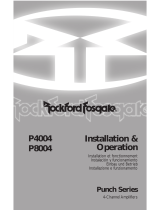 Rockford Fosgate Punch P8004 Mode d'emploi
Rockford Fosgate Punch P8004 Mode d'emploi
-
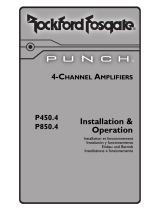 Rockford Fosgate Punch P850.4 Guide d'installation
Rockford Fosgate Punch P850.4 Guide d'installation
-
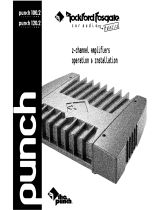 Rockford Fosgate Punch 120.2 Operation & Installation
Rockford Fosgate Punch 120.2 Operation & Installation
-
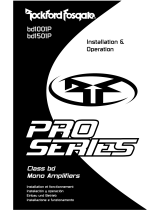 Rockford Fosgate Pro bd1001P Mode d'emploi
Rockford Fosgate Pro bd1001P Mode d'emploi
-
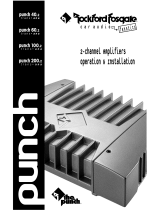 Rockford Fosgate Punch 100.2 Operations & Installation Manual
Rockford Fosgate Punch 100.2 Operations & Installation Manual
-
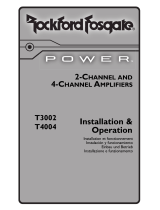 Rockford Fosgate Power Elite T3002 Guide d'installation
Rockford Fosgate Power Elite T3002 Guide d'installation
-
Audio Design P400-A Le manuel du propriétaire
-
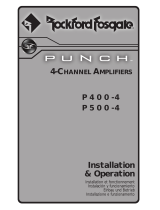 Rockford Fosgate Punch P500-4 Mode d'emploi
Rockford Fosgate Punch P500-4 Mode d'emploi
-
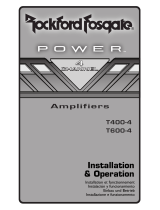 Rockford Fosgate t 600 4 Le manuel du propriétaire
Rockford Fosgate t 600 4 Le manuel du propriétaire
-
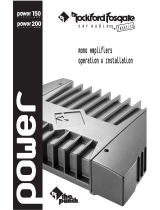 Rockford Fosgate POWER 200 Operation & Installation
Rockford Fosgate POWER 200 Operation & Installation
Autres documents
-
JL Audio JX360/2 Le manuel du propriétaire
-
JL Audio 4D Le manuel du propriétaire
-
Blaupunkt PCA450 Manuel utilisateur
-
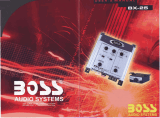 Boss Audio Systems BX25 Le manuel du propriétaire
Boss Audio Systems BX25 Le manuel du propriétaire
-
MB QUART QAA1000 Manuel utilisateur
-
Blaupunkt PCA 250 Manuel utilisateur
-
Bazooka MGA4150 Manuel utilisateur
-
Infinity INFDSP4425 4-Channel Class A/b 200W Digital Signal Processing Amplifier Guide de démarrage rapide
-
Lanzar Car Audio MAXP 4260 Manuel utilisateur
-
Rockville RVE12CA Le manuel du propriétaire



















































